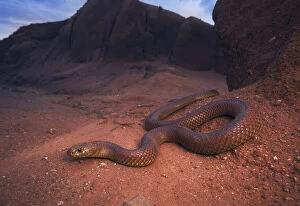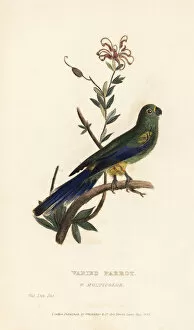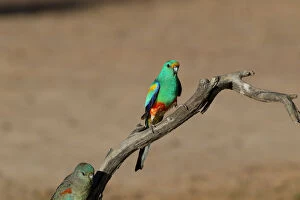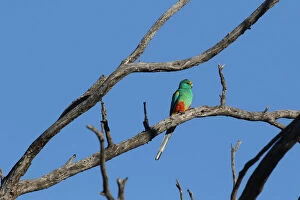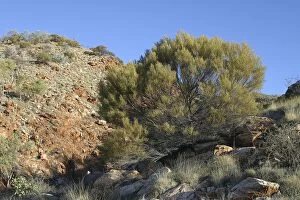Mulga Collection
Mulga, a large and wild king brown snake native to south central New South Wales, Australia
For sale as Licensed Images
Choose your image, Select your licence and Download the media
Mulga, a large and wild king brown snake native to south central New South Wales, Australia. With its striking patterns and formidable size, the mulga snake is a sight to behold in the Australian wilderness. Juvenile mulga snakes can often be found near spinifex vegetation, their small bodies blending seamlessly with the surroundings. In addition to the fascinating reptiles that share its name, it is home to other unique wildlife. The vibrant Mulga parrot adds a splash of color to this arid landscape with its beautiful plumage. Pictures No. 12018928, 12018927, 12018926, and 12018925 capture the essence of these creatures in their natural habitat. The significance extends beyond its fauna; it plays an important role in Aboriginal culture as well. Mulga trees have been utilized by Indigenous communities for generations - their seeds roasted and ground into a paste for sustenance while serving as a vital source of wood for various implements. Even more intriguing are the larvae found within wasp galls on mulga trees. These tiny creatures provide nourishment and resources for both humans and wildlife alike. The landscape surrounding mulga is equally captivating - sand dunes stretching across Stzelecki Desert create an awe-inspiring backdrop against which these ancient trees stand tall. Varanus eremius and Varanus gilleri lizards roam freely amidst this breathtaking scenery. Hill Mulgas dotting spinifex-covered hillsides add another layer of beauty to this already mesmerizing environment. Aboriginal people have long relied on these hillsides not only for sustenance but also as sources of timber used in crafting heavy fighting spears. Mulga embodies both natural wonder and cultural significance - a testament to Australia's rich biodiversity intertwined with indigenous heritage.


